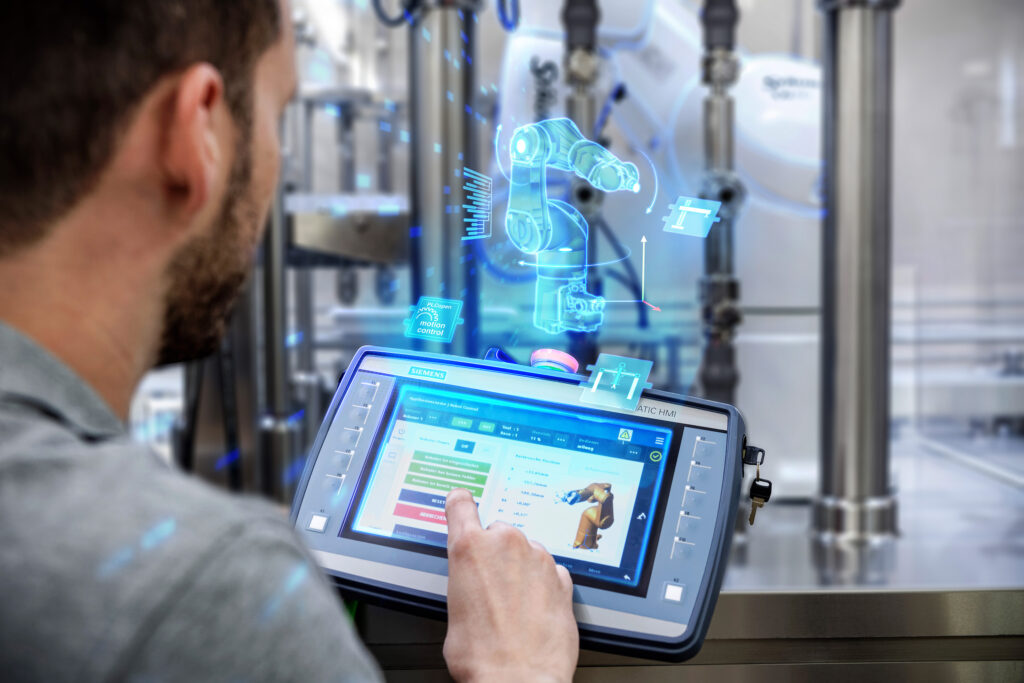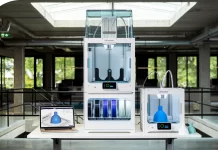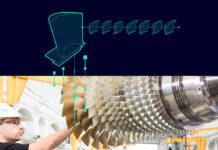 Additive manufacturing, or 3D printing, is moving into mainstream manufacturing due to its compelling benefits — it can be faster and more flexible than traditional manufacturing approaches. It also imposes fewer constraints on product design, supporting design freedom that comes from not having to integrate or consider manufacturing methods like welding, sheet metal, and casting. Instead, engineers can focus on the minimum material needed for the design. Additive manufacturing can also combine multiple separate parts to design as a single additive component, which can eliminate the cost of precision machining each individual part.
Additive manufacturing, or 3D printing, is moving into mainstream manufacturing due to its compelling benefits — it can be faster and more flexible than traditional manufacturing approaches. It also imposes fewer constraints on product design, supporting design freedom that comes from not having to integrate or consider manufacturing methods like welding, sheet metal, and casting. Instead, engineers can focus on the minimum material needed for the design. Additive manufacturing can also combine multiple separate parts to design as a single additive component, which can eliminate the cost of precision machining each individual part.
Given these potential benefits, manufacturing companies need to be thoughtful as to where they integrate additive into machine design, focusing on areas where additive can improve machine performance and where cost and quality can be managed effectively versus conventional machining and fabrication.
However, for all its attractive qualities, there are still considerable challenges in delivering additive manufacturing for high-quality parts at an industrial scale. There is a need for a tightly integrated and closed-loop design-simulate-manufacture flow to achieve quality additive products while minimizing design iterations. Before printing, designs need to undergo rigorous simulations of the printing process to mitigate risks, optimize the printing, and improve yield. This method must cover the full breadth of variables that can affect the outcome of additive, including the mixture of virgin and recycled print material, ambient humidity, machine parameters, and more. Besides, most companies will need to fit AM machinery into existing facilities, integrating it with conventional manufacturing processes.
Smart Manufacturing and a Digital Twin
Only a comprehensive digital twin spans initial design to simulation, production, and testing with the goal of improving yields from additive manufacturing. This type of robust digital twin even includes post-process machining, plus make-ready processes for industrial machinery assembly. When the digital twin encompasses the electrical, software, and PLC programming it creates a true multi-disciplinary approach for a full digital twin.
A smart manufacturing approach with this type of digital twin can help manufacturers respond to industry trends, such as the need to respond to customer-driven customization. Machines automate processes to help companies’ lower costs and expedite delivery of their goods to the end user. Hence trends in the broader consumer market ultimately end up defining what machinery customers need. A typical consumer product’s development cycle is compressing – lot sizes are smaller, and product life spans are shorter. So, machinery customers need machines that are more flexible and adaptable to an ever-changing product mix, often with customized features or functions that require machine builders to innovate more quickly. Using a digital twin offers this flexibility required to meet changing customer needs.
Utilizing a Digital Twin
The holistic digital twin is ready to tackle these issues and optimize production beyond the factory floor. A digital twin provides a representation of all phases of the product life, from ideation (engineering and simulation) and realization (manufacturing and requirements) through to utilization for operation and maintenance information. This abundance of information assists in completing the product.
The digital twin is essential for constructing and executing the printing of additive parts while managing delivery, manufacturing, operations, and quality of manufacturing operations management. All these components deliver an awareness for harmonizing the activities to deliver the correct parts at the right time. Manufacturing machinery necessitates skillfully orchestrating the supply chain, internal manufacturing, and assembly. Hence, the united knowledge management portion is a crucial element for designing and manufacturing, because supply chain management is essential in integrating additive manufacturing.
Not all additive machines or technologies are equal, and not all additive part suppliers are equivalent. Because post-additive part geometry stability and heterogeneity are variables resulting from the additive process, manufacturing companies need to consider inbound inspection processes that directly address these issues.
 Implementing A Digital Twin and Virtual Machine Simulation
Implementing A Digital Twin and Virtual Machine Simulation
Designing and manufacturing machines using a digital twin provides additional advantages via the virtual machine simulation and commissioning process. This simulation enables the validation of a manufacturing machine’s software code virtually before it physically operates on the factory floor.
Currently, machines contain tens of thousands of sensors; thus, it’s common to not identify all of them in the code from the beginning, pushing that behavior expectation downstream. Instead, compressing the delivery time in terms of code writing simulation is the payoff, when the machine is sitting on the floor, waiting for the customer to accept the written code.
The behavior of machines is driven by software via simulating the code on a virtual digital twin to produce considerable benefits, including reducing time and resources when commissioning a new manufacturing machine or reconfiguring a line for a new product type. The PLC software code is validated, via virtual commissioning, in a controlled environment with a modular product development strategy. This method permits machine builders to complete the simulation in the beginning, linking the software to the modules.
The Future of Manufacturing – Smart Manufacturing Via the Digital Twin
Implementing smart manufacturing via a digital twin and virtual commissioning simulation provides the essential stages to an innovative future of industrial mechanical and product design, including the use of additive manufacturing. A comprehensive digital twin that spans conceptual design to product conclusion can deliver quality-of-life advances to the design engineers and all parties controlling manufacturing, operations, or management. When providing virtual commissioning capabilities, it empowers machine building, and a new process line, digitally simulating it before shipping the physical product, thus reducing downtime.
Additive manufacturing unlocks tremendous flexibility in the manufacturing process by allowing organizations to create lot sizes of one. Additive manufacturing is a technology uniquely positioned to help machine builders quickly respond to the flexibility and short lead times that are required due to current industry trends. Using additive manufacturing with a digital twin can drive new frontiers of performance and mass individualization, enabling new business models and new methods of production.
Siemens’ Xcelerator portfolio provides capabilities to simulate additive manufacturing as well as the production floor, saving time and money in modeling, and optimizing operations before construction or equipment installation begins. The digital twin for smart manufacturing enables innovation for the machine manufacturer, the product manufacturer, and the end customer. It empowers all areas to know what needs to be built, thus providing extraordinary value for all parties. Smart manufacturing with a comprehensive digital twin is where today meets tomorrow.





















